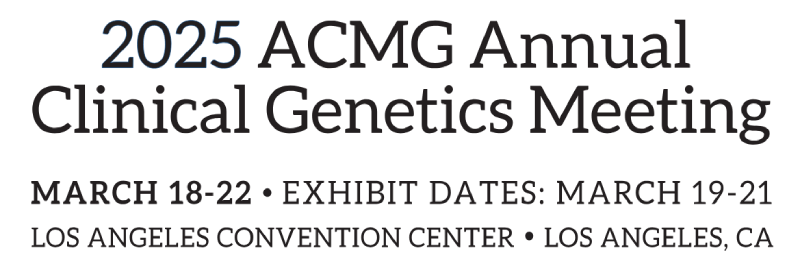Prenatal Ultrasound Diagnosis of Complex Cardiac Defects and Heterotaxy Syndrome Associated with DNAH9 Gene Pathogenic Variant
Prenatal Genetics
-
Primary Categories:
- Prenatal Genetics
-
Secondary Categories:
- Prenatal Genetics
Introduction
DNAH9 gene plays an important role in the development and function of cilia, the hair-like structures on many cell surfaces in the body. The pathogenic variant of DNAH9 gene has been associated with primary ciliary dyskinesia (PCD), laterality defects, and congenital heart disease. There is limited information about prenatal and ultrasonographic findings associated with pathogenic variant of DNAH9 gene. In addition, an incidental finding in this case was RPGRIP1L, a variant of uncertain significance (VUS), currently thought to be a gene modifier. In this case, we highlight the need for further understanding of RPGRIP1L variant and pathogenic variant of DNAH9 in prenatal screening, ultrasound markers, and diagnosis.
Case Presentation
A.R.R is a 32-year-old Gravida 1 at 20 weeks and 4 days gestation who presented with fetal findings of complex fetal cardiac defects and heterotaxy syndrome with dextrocardia on prenatal ultrasound. The findings included atretic tricuspid and pulmonary valves and parallel outflow tracts from the morphologically right ventricle, suggesting transposition of the great arteries with a large atrioventricular septal defect.
Diagnostic Workup
Prenatal screening with cell-free DNA (cfDNA) and carrier screening for Cystic Fibrosis, Fragile X, and Spinal Muscular Atrophy were low-risk or negative. However, a 133-gene ciliopathy panel via amniocentesis detected a likely pathogenic variant in DNAH9 (c.615-2A>G) and RPGRIP1L, VUS, (c.1939G>A, p.Val647Ile).
Treatment and Management
Patient declined further workup with exome sequencing. The patient was recommended to complete a fetal echocardiogram and to deliver at a major comprehensive center given these fetal findings.
Outcome and Follow-Up
A.R.R. chose to undergo dilation and evacuation at 21 weeks and 4 days gestation. For subsequent pregnancy planning and surveillance, patient was recommended to obtain preconception counseling with maternal fetal medicine.
Discussion
This case report describes a prenatally diagnosed pathogenic variant of DNAH9 (c.615-2A>G). The prenatal phenotype with this pathogenic DNAH9 variant included complex fetal cardiac defects and heterotaxy syndrome with dextrocardia. The findings of complex cardiac defects such as valvular atresia, transposition of the great arteries, atrioventricular septal defects have not previously been characterized by this pathogenic gene in literature.
RPGRIP1L (VUS) was an incidental finding and is currently known to be associated with Meckel-Gruber syndrome (MKS) and Joubert syndrome (JBTS). Both MKS and JBTS are ciliopathies that can lead to retinal degeneration, and the presence of RPGRIP1L variant may affect the severity or progression of this eye condition in affected individuals. RPGRIP1L variant is not known to be associated with complex cardiac findings.
Conclusion
This case highlights the importance of prenatal genetic testing and ultrasound screening of DNAH9 variant. The prenatal findings also contributes to the knowledge of ultrasonographic markers associated with pathogenic DNAH9 variant. As 3D ultrasonography advances, prenatal ultrasonographic markers and genetic testing may enable earlier detection and diagnosis, potentially improving genetic counseling, targeted testing, and shared decision-making with patients.
DNAH9 gene plays an important role in the development and function of cilia, the hair-like structures on many cell surfaces in the body. The pathogenic variant of DNAH9 gene has been associated with primary ciliary dyskinesia (PCD), laterality defects, and congenital heart disease. There is limited information about prenatal and ultrasonographic findings associated with pathogenic variant of DNAH9 gene. In addition, an incidental finding in this case was RPGRIP1L, a variant of uncertain significance (VUS), currently thought to be a gene modifier. In this case, we highlight the need for further understanding of RPGRIP1L variant and pathogenic variant of DNAH9 in prenatal screening, ultrasound markers, and diagnosis.
Case Presentation
A.R.R is a 32-year-old Gravida 1 at 20 weeks and 4 days gestation who presented with fetal findings of complex fetal cardiac defects and heterotaxy syndrome with dextrocardia on prenatal ultrasound. The findings included atretic tricuspid and pulmonary valves and parallel outflow tracts from the morphologically right ventricle, suggesting transposition of the great arteries with a large atrioventricular septal defect.
Diagnostic Workup
Prenatal screening with cell-free DNA (cfDNA) and carrier screening for Cystic Fibrosis, Fragile X, and Spinal Muscular Atrophy were low-risk or negative. However, a 133-gene ciliopathy panel via amniocentesis detected a likely pathogenic variant in DNAH9 (c.615-2A>G) and RPGRIP1L, VUS, (c.1939G>A, p.Val647Ile).
Treatment and Management
Patient declined further workup with exome sequencing. The patient was recommended to complete a fetal echocardiogram and to deliver at a major comprehensive center given these fetal findings.
Outcome and Follow-Up
A.R.R. chose to undergo dilation and evacuation at 21 weeks and 4 days gestation. For subsequent pregnancy planning and surveillance, patient was recommended to obtain preconception counseling with maternal fetal medicine.
Discussion
This case report describes a prenatally diagnosed pathogenic variant of DNAH9 (c.615-2A>G). The prenatal phenotype with this pathogenic DNAH9 variant included complex fetal cardiac defects and heterotaxy syndrome with dextrocardia. The findings of complex cardiac defects such as valvular atresia, transposition of the great arteries, atrioventricular septal defects have not previously been characterized by this pathogenic gene in literature.
RPGRIP1L (VUS) was an incidental finding and is currently known to be associated with Meckel-Gruber syndrome (MKS) and Joubert syndrome (JBTS). Both MKS and JBTS are ciliopathies that can lead to retinal degeneration, and the presence of RPGRIP1L variant may affect the severity or progression of this eye condition in affected individuals. RPGRIP1L variant is not known to be associated with complex cardiac findings.
Conclusion
This case highlights the importance of prenatal genetic testing and ultrasound screening of DNAH9 variant. The prenatal findings also contributes to the knowledge of ultrasonographic markers associated with pathogenic DNAH9 variant. As 3D ultrasonography advances, prenatal ultrasonographic markers and genetic testing may enable earlier detection and diagnosis, potentially improving genetic counseling, targeted testing, and shared decision-making with patients.




)
)
)
)
)
)
)
)
)
)
)
)
)
)
)
)
)
)
)
)